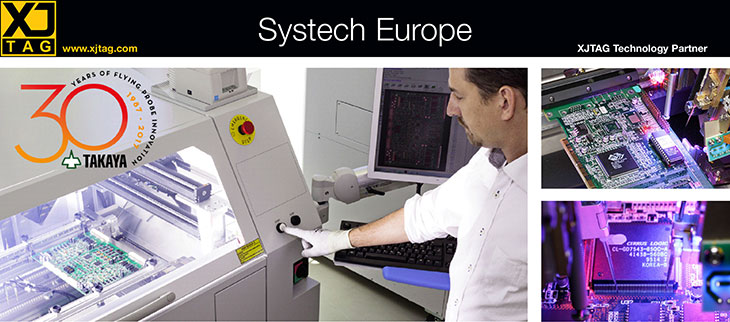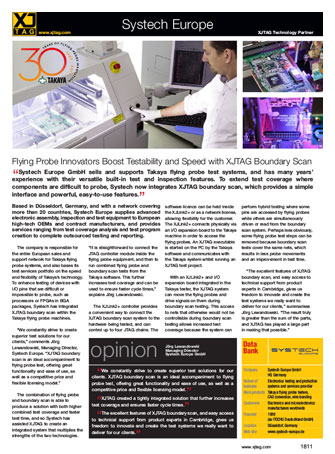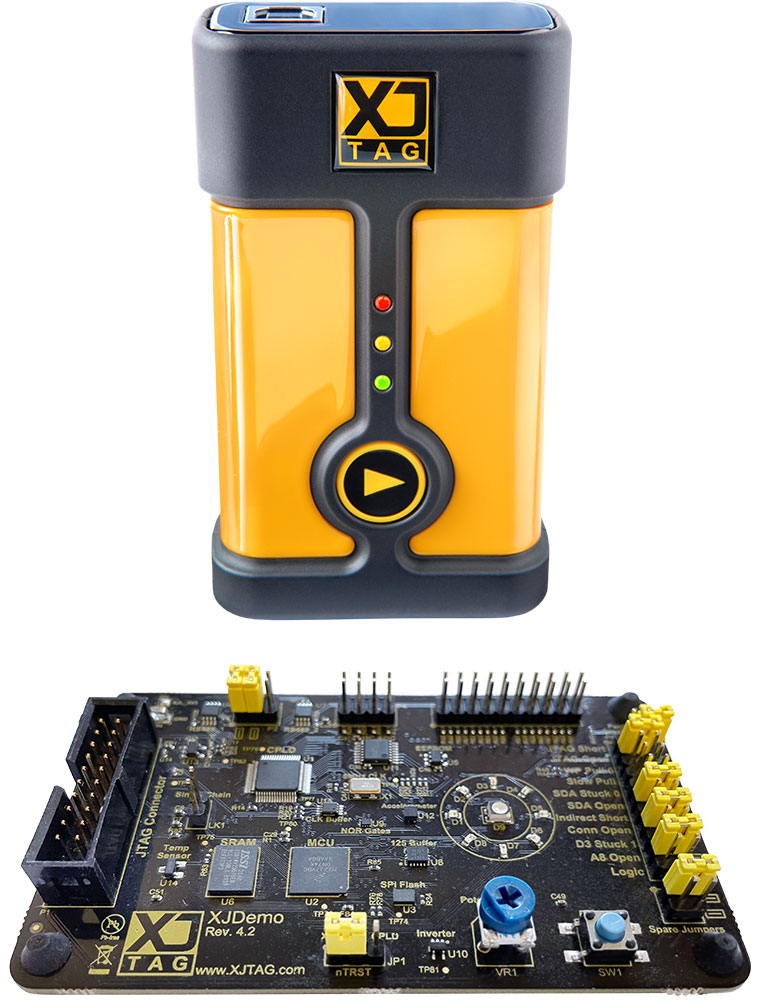
Flying Probe Innovators Boost Testability and Speed with XJTAG Boundary Scan
Systech Europe GmbH sells and supports Takaya flying probe test systems, and has many years’ experience with their versatile built-in test and inspection features. To extend test coverage where components are difficult to probe, Systech now integrates XJTAG boundary scan, which provides a simple interface and powerful, easy-to-use features.
Based in Düsseldorf, Germany, and with a network covering more than 20 countries, Systech Europe supplies advanced electronic assembly, inspection and test equipment to European high-tech OEMs and contract manufacturers, and provides services ranging from test coverage analysis and test program creation to complete outsourced testing and reporting.
The company is responsible for the entire European sales and support network for Takaya flying probe systems, and also bases its test services portfolio on the speed and flexibility of Takaya’s technology. To enhance testing of devices with I/O pins that are difficult or impossible to probe, such as processors or FPGAs in BGA packages, Systech has integrated XJTAG boundary scan within the Takaya flying probe machines.
“We constantly strive to create superior test solutions for our clients,” comments Jörg Lewandowski, Managing Director, Systech Europe. “XJTAG boundary scan is an ideal accompaniment to flying probe test, offering great functionality and ease of use, as well as a competitive price and flexible licensing model.”
The combination of flying probe and boundary scan is able to produce a solution with both higher combined test coverage and faster test time, and so Systech has assisted XJTAG to create an integrated system that multiplies the strengths of the two technologies. “It is straightforward to connect the JTAG controller module inside the flying probe equipment, and then to run combined flying probe and boundary scan tests from the Takaya software. This further increases test coverage and can be used to ensure faster cycle times,” explains Jörg Lewandowski.
The XJLink2+ controller provides a convenient way to connect the XJTAG boundary scan system to the hardware being tested, and can control up to four JTAG chains. The software licence can be held inside the XJLink2+ or as a network license, allowing flexibility for the customer. The XJLink2+ connects physically via an I/O expansion board to the Takaya machine in order to access the flying probes. An XJTAG executable is started on the PC by the Takaya software and communicates with the Takaya system whilst running an XJTAG test project.
With an XJLink2+ and I/O expansion board integrated in the Takaya tester, the XJTAG system can move the flying probes and drive signals on them during boundary scan testing. This access to nets that otherwise would not be controllable during boundary scan testing allows increased test coverage because the system can perform hybrid testing where some pins are accessed by flying probes while others are simultaneously driven or read from the boundary scan system. Perhaps less obviously, some flying probe test steps can be removed because boundary scan tests cover the same nets, which results in less probe movements and an improvement in test time.
“The excellent features of XJTAG boundary scan, and easy access to technical support from product experts in Cambridge, gives us freedom to innovate and create the test systems we really want to deliver for our clients,” summarises Jörg Lewandowski. “The result truly is greater than the sum of the parts, and XJTAG has played a large part in making that possible.”

We constantly strive to create superior test solutions for our clients. XJTAG boundary scan is an ideal accompaniment to flying probe test, offering great functionality and ease of use, as well as a competitive price and flexible licensing model.
XJTAG created a tightly integrated solution that further increases test coverage and ensures faster cycle times.
The excellent features of XJTAG boundary scan, and easy access to technical support from product experts in Cambridge, gives us freedom to innovate and create the test systems we really want to deliver for our clients.

Company: Systech Europe GmbH
HQ Germany
Nature of business:
Electronics testing and production systems and services provider
Main products:
Takaya flying probe testers, CAD conversion, wire bonding
Customers:
Electronics and microelectronics manufacturers worldwide
Founded: 1989 (as ITOCHU Deutschland GmbH)
Location: Düsseldorf, Germany
Web site: www.systech-europe.de

Configure your products














